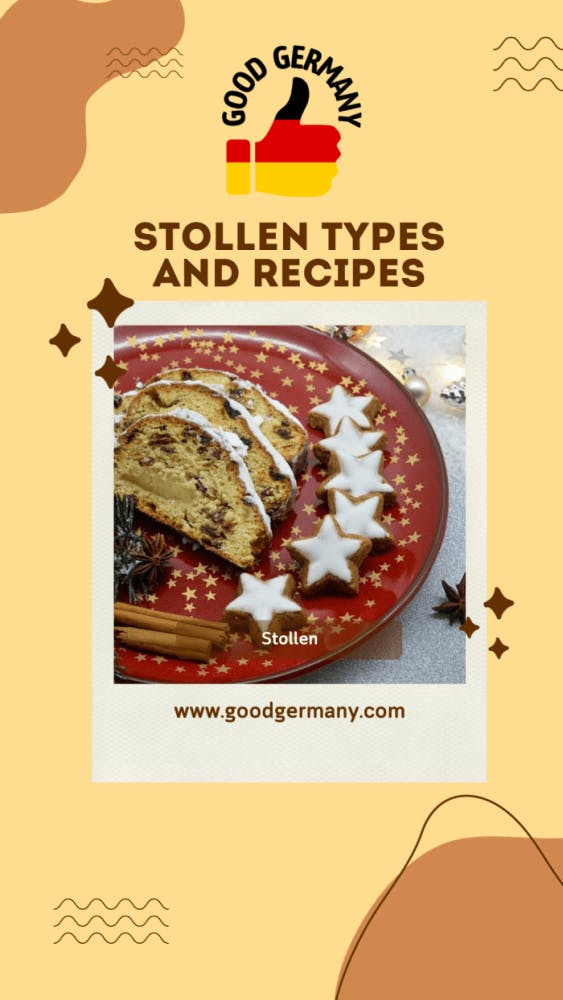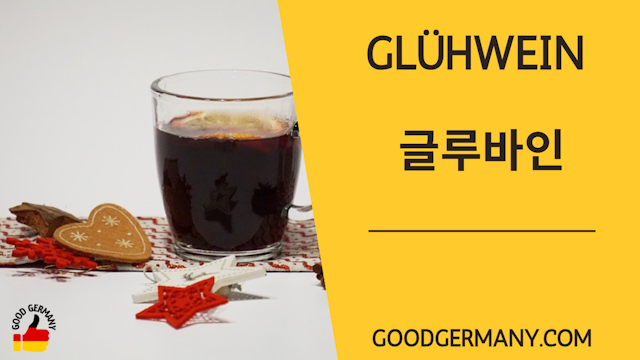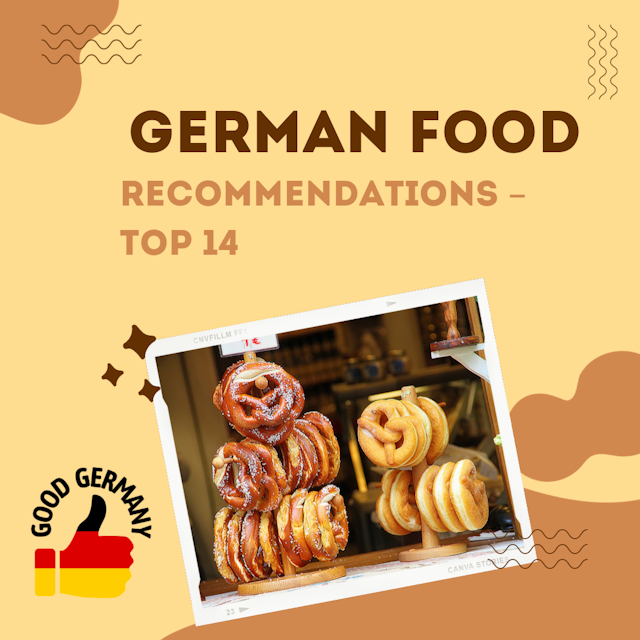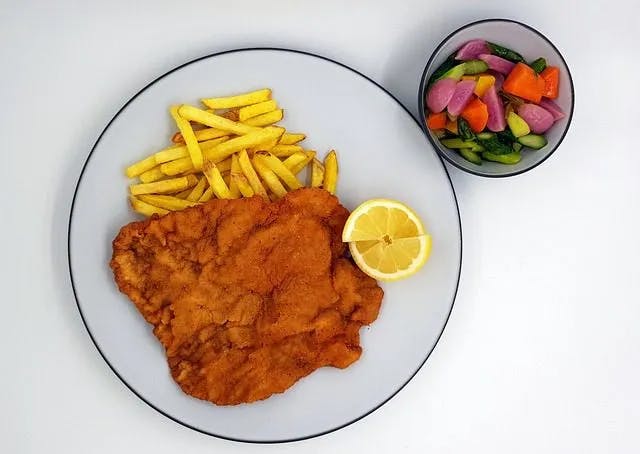[Glühwein] Traditional German Mulled Wine, 12 Infos
2023-12-14

I. Introduction
German Glühwein, a delightful winter beverage, holds a special place in the hearts of many. Originating from the German-speaking regions, Glühwein is a warm, spiced red wine that brings comfort and cheer during the colder months.
Aspect | Details |
Name | Glühwein |
Origin | Germany |
Ingredients | Red wine, spices (cinnamon, cloves, star anise), orange peel, sugar |
Preparation | 1. Heat red wine in a pot without boiling.<br>2. Add spices, orange peel, and sugar.<br>3. Simmer to infuse flavors (do not boil).<br>4. Strain before serving. |
Serving Temperature | Warm |
Commonly Served With | Cinnamon sticks, orange slices |
Occasions | Christmas markets, winter gatherings |
Variations | White Glühwein (made with white wine), non-alcoholic versions |
Taste Profile | Warm, spiced, slightly sweet |
Traditions | Popular at Christmas markets and winter festivals |
Glassware | Typically served in mugs or heat-resistant glasses |
Garnish | Cinnamon sticks, orange slices |
Popular Regions | Germany, Austria, Switzerland, Nordic countries |
Definition of German Glühwein
Glühwein, translating to "glow wine," is a traditional German drink enjoyed primarily during the winter season. It is made by mulling red wine with a blend of spices, creating a concoction that warms both body and soul.
Historical Background
To truly appreciate Glühwein, understanding its historical roots is essential. The tradition dates back to the 15th century, where it was initially used for medicinal purposes. Over time, it evolved into a beloved holiday beverage, gaining popularity not only in Germany but also around the world.
II. Ingredients of German Glühwein
Primary Wine Selection
The heart of a perfect Glühwein lies in the choice of wine. Traditionally, a robust red wine, such as Merlot or Cabernet Sauvignon, is preferred. The deep flavors of these wines form a harmonious base for the infusion of spices.
Spices and Flavorings
The secret to a captivating Glühwein lies in its spice blend. Common ingredients include cinnamon sticks, cloves, star anise, and orange peel. These elements combine to create a symphony of flavors, enhancing the richness of the wine.
Optional Additions
While the classic recipe stands the test of time, enthusiasts often experiment with additional ingredients like nutmeg, cardamom, or even a splash of brandy for an extra kick.
III. Traditional Preparation Method
Step-by-Step Guide
Creating the perfect Glühwein involves a careful process. Begin by gently heating the wine on low heat, ensuring the spices release their flavors without compromising the integrity of the wine. Patience is key during this slow mulling process.
Importance of Slow Heating
The slow heating process is crucial to allow the infusion of flavors without boiling off the alcohol content. This method preserves the essence of the wine, resulting in a warm, aromatic beverage.

IV. Seasonal Significance
German Glühwein During Holidays
As winter descends, the aroma of Glühwein wafting through German Christmas markets is a familiar and heartwarming scene. The beverage is synonymous with holiday celebrations, creating a festive atmosphere.
Cultural Rituals Around Glühwein
Beyond its association with holidays, Glühwein holds cultural significance. Families and friends gather around, sipping the warm elixir as they share stories and create lasting memories.
V. Health Benefits
Moderation and Antioxidant Properties
While Glühwein is enjoyed for its taste, it also offers health benefits when consumed in moderation. The antioxidants present in red wine, coupled with the spices, contribute to overall well-being.
Common Misconceptions Addressed
It's essential to dispel the myth that Glühwein is merely a festive indulgence. When consumed responsibly, it can be a part of a healthy lifestyle, adding warmth and joy without excessive calories.

VI. Popular Variations
Regional Differences
Germany's diverse regions add their unique twist to Glühwein. From the bold concoctions in Bavaria to the subtly spiced versions in the Rhineland, each area boasts its interpretation of this beloved drink.
Unique Twists on the Classic Recipe
Creative minds have taken Glühwein to new heights, introducing variations with unexpected ingredients. From using white wine to infusing floral notes, these twists cater to diverse palates.
VII. Serving and Presentation
Ideal Serving Temperatures
To fully appreciate the flavors, Glühwein is best served warm but not scalding. The ideal temperature allows the drinker to savor the intricate blend of spices without compromising the experience.
Traditional Vessels and Garnishes
Authenticity is enhanced by serving Glühwein in traditional mugs or glassware. Garnishes like orange slices or cinnamon sticks not only add visual appeal but also intensify the aromatic experience.
VIII. Pairing Suggestions
Complementary Food Pairings
Pairing Glühwein with the right foods enhances the overall experience. It complements hearty winter dishes, cheeses, and desserts, creating a harmonious balance of flavors.
Non-Alcoholic Alternatives
For those abstaining from alcohol, non-alcoholic Glühwein options are available, ensuring everyone can partake in the seasonal joy.
IX. Cultural Impact Beyond Germany
Spread of Glühwein Tradition
What began as a German tradition has now transcended borders. Glühwein has become a symbol of warmth and conviviality, adopted by various cultures around the world.
Global Festivals and Events Featuring Glühwein
International festivals and events often showcase Glühwein, creating a shared experience that bridges cultural gaps and fosters a sense of unity.
X. Making Glühwein at Home
DIY Tips and Tricks
For those eager to recreate the magic at home, mastering the art of Glühwein is a rewarding endeavor. Tips include choosing quality ingredients, experimenting with spice ratios, and embracing creativity.
Creative Adaptations
Home enthusiasts can take the basic recipe and add a personal touch. Whether infusing unique spices or exploring different wine varieties, the possibilities are as vast as one's imagination.
XI. Tips for Choosing Wine
Wine Selection Guide
Selecting the right wine is pivotal to the success of Glühwein. Understanding the flavor profiles of different red wines empowers enthusiasts to tailor the drink to their preferences.
Importance of Quality Ingredients
Quality ingredients, from the wine to the spices, elevate Glühwein from a simple beverage to a sensory experience. Investing in premium components ensures a memorable outcome.
XII. Glühwein in Modern Cuisine
Fusion Recipes
Innovative chefs are incorporating Glühwein into modern dishes, creating fusion recipes that blend traditional warmth with contemporary flavors. These dishes are a testament to Glühwein's versatility.
Contemporary Twists by Chefs
Renowned chefs worldwide are putting their spin on Glühwein, infusing it into sauces, desserts, and even cocktails. These culinary creations redefine the boundaries of this classic beverage.
XIII. Exploring Glühwein Festivals
Prominent Glühwein Events
Attending Glühwein festivals offers a firsthand experience of the beverage's diverse interpretations. From large-scale events to intimate gatherings, each festival brings a unique charm.
Unique Experiences at Festivals
Beyond the drink itself, Glühwein festivals provide a platform for cultural exchange, live music, and a festive atmosphere. Attendees immerse themselves in the spirit of the season.
XIV. Social Media Buzz
Hashtags and Trends
Social media plays a significant role in amplifying Glühwein's popularity. Hashtags like #WarmWineMagic and #GlowingSips are trending, creating a virtual community of enthusiasts sharing their experiences.
Community Engagement
Engaging with the online Glühwein community fosters a sense of camaraderie. From sharing personal recipes to participating in virtual tastings, the online space enhances the overall enjoyment of Glühwein.
XV. Conclusion
Recap of Key Points
German Glühwein is more than a beverage; it's a centuries-old tradition that continues to warm hearts globally. From its humble origins to the modern culinary scene, Glühwein's journey is a testament to its enduring appeal.
Inviting Readers to Experience the Warmth of German Glühwein
As you embark on your Glühwein journey, savor the warmth, the rich flavors, and the cultural significance embedded in every sip. Whether at a festive market or in the comfort of your home, let German Glühwein be the companion that adds a touch of magic to your winter moments.
5 Unique FAQs About German Glühwein
Is Glühwein only enjoyed during the winter season?*While Glühwein is synonymous with winter and holiday festivities, many people enjoy it throughout the year. Its unique blend of spices and warmth makes it a comforting beverage even on cooler spring or autumn evenings.
Can I use white wine instead of red for Glühwein?*Certainly! While red wine is traditional, white wine can be used for a refreshing twist on the classic recipe. Experiment with different wine varieties to discover your preferred flavor profile.
Are there non-alcoholic alternatives for Glühwein?*Absolutely. Non-alcoholic Glühwein options are available, often made with fruit juices and a blend of spices. These alternatives are perfect for those who prefer to abstain from alcohol.
What is the significance of the term 'Glühwein'?*The term 'Glühwein' translates to "glow wine" in English. It reflects the warm, radiant feeling one experiences while sipping on this spiced, mulled wine, especially during colder seasons.
Can Glühwein be made with pre-packaged spice blends?*Yes, using pre-packaged spice blends is a convenient way to make Glühwein. However, experimenting with fresh spices allows you to tailor the flavor to your liking and create a more personalized experience.
Share
Tag
Related Blog

Stollen Types and Recipes: German Christmas Breads
2023-10-13
Lebkuchen – German Cookies Recipe and Information
2023-09-15
[Glühwein] Traditional German Mulled Wine, 12 Infos
2023-12-14
Exploring Food Delivery Services: Wolt, Uber Eats, and Lieferando
2023-08-27
German Beer Brands – Top 5
2023-08-18
Is German Tap Water Safe to Drink?
2023-08-01
Haribo Products(Flavors Top 17) – Since 1922
2023-07-29
German Food Recommendations – Top 14
2023-07-15
German Schnitzel Types – Top 11
2023-07-15
German Sausage(Wurst) Types: A Delicious Journey through Traditional Flavors
2023-07-04